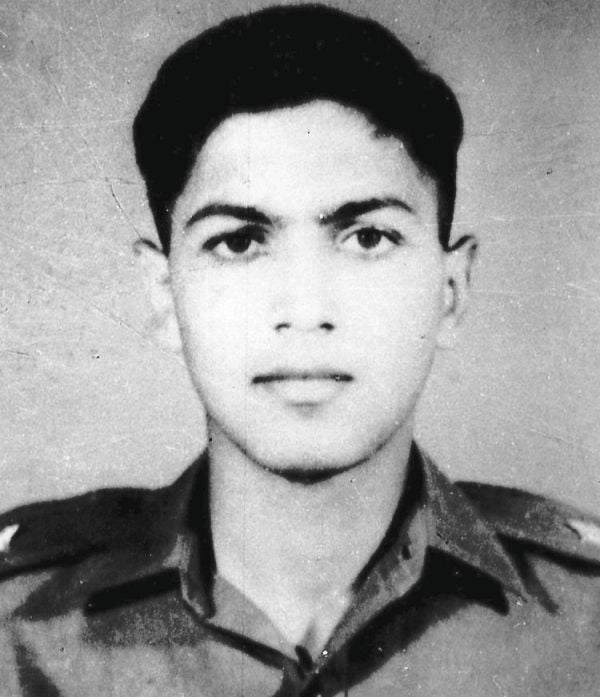PERSONAL INFORMATION
Profession: Army Personnel
Famous For: Battle of Basantar (Indo-Pakistan War of 1971)
Date of Birth: 14 October 1950 (Saturday)
Age (at the time of death): 21 Years
Birthplace: Pune, Bombay State (now Maharashtra), India
Zodiac sign: Libra
Nationality: Indian
Hometown: Pune, Maharashtra, India
Age: 21 Years
Check Out Other Celebrities Biography
- karan wahi biography
- bhavya bishnoi biography
- tejasswi prakash wayangankar biography
- nithya menen biography
- prannoy roy news anchor biography
EDUCATION
School: The Lawrence School, Sanawar
College/University: • National Defence Academy, Khadakwasla • Indian Military Academy, Dehradun
FAMILY & RELATIONSHIPS
Marital Status: Unmarried
Parents: Father – M. L. Khetarpal (a retired Brigadier) Mother – Maheshwari Khetarpal (a trained dietician)
Siblings: Brother – Mukesh Khetarpal (working as a management consultant in Delhi)
CAREER HIGHLIGHTS
Awards, Honours, Achievements: • The Param Vir Chakra • Parade ground at NDA has been named after him • A stadium has been named after him at his school, The Lawrence School Sanawar
MONEY FACTOR
Career Ranks: Second Lieutenant (13 June 1971)
OTHER INFORMATION
Service/Branch: Indian Army
Rank: Second Lieutenant
Service Years: 13 June 1971 – 16 December 1971
Unit: 17 Poona Horse (Armoured Corps)
Service Number: IC-25067
Place of Death: Shakargarh Sector, Punjab Province, Pakistan
Death Cause: He died after being injured severely in the tank battle at the Battle of Basantar [1] Indian Army’s Official Website
Address: C-31, Anand Niketan, New Delhi, Delhi – 110021, India
Bike Collection: He owned a Jawa manufactured by Jawa Moto
Death Date: 16/12/1971
INTERESTING BACKGROUND INFORMATION
Second Lieutenant Arun Khetarpal was a distinguished officer in the Indian Army, who posthumously garnered the nation’s highest military honor, the Param Vir Chakra, for his courageous actions during a pivotal tank battle in the 1971 India-Pakistan War. Born into a family steeped in military tradition, with his father serving as an officer in the Corps of Engineers, Arun’s life was marked by a commitment to service. His family’s roots traced back to Sargodha in the Punjab Province, now in Pakistan, having relocated to India after the partition. This rich heritage inspired Arun from a young age, and he exhibited exceptional qualities early on as a student at Lawrence School, Sanawar, where he not only excelled academically but also showcased his prowess in various sports, eventually earning the title of school prefect for his all-around excellence.
After completing his schooling in 1967, Arun’s ambitions led him to clear the entrance examination for the National Defence Academy (NDA), where he thrived under the rigorous training regimen, eventually rising to the position of Squadron Cadet Captain. His journey through the NDA culminated in 1970, when he transitioned to the Indian Military Academy, where he further honed his military skills. Upon commissioning into the army, Arun was assigned to a unit tasked with establishing a bridgehead at Shakarhgarhi Sector in Pakistan. On December 15, 1971, the Indian Army successfully captured Shakarhgarhi, prompting a fierce counterattack from the Pakistani forces the following day.
On December 16, as the Pakistani armored column launched an assault on the ‘B’ Squadron of the Poona Horse, Arun Khetarpal, commanding the ‘A’ Squadron, immediately sprang to action. Responding to a distress call for reinforcements, he led his men into battle, bravely engaging the enemy and destroying a significant number of Pakistani tanks. Despite suffering severe injuries and facing overwhelming odds, Arun continued to fight valiantly from his damaged tank, which was ironically named Famagusta, a tribute to the historical battles fought by his regiment during World War II. Ultimately, his tank became the last operational vehicle of his squadron, and despite orders to abandon it, he chose to remain in the fight, taking down an impressive ten Pakistani Patton tanks before succumbing to his injuries in a final act of valor against the armored column’s commander, Major Khwaja Mohammad Naser.
Arun Khetarpal’s legacy extends beyond his heroic actions on the battlefield. His tank was later restored and stands as a monument at the Regimental Centre of the Armoured Corps in Ahmednagar, Maharashtra, serving as a lasting tribute to his bravery and sacrifice. In a poignant twist of fate, Brigadier M. L. Khetarpal paid homage to his ancestral roots by visiting Sargodha in Pakistan in 2001, where he met Major Khwaja Mohammad Naser, who had delivered the final blow to Arun’s tank. This meeting symbolized a moment of respect and recognition between former adversaries, reflecting on the gallantry displayed by Arun during the war. As his story continues to inspire future generations, plans for a biographical film titled ‘Ekkis’ have emerged, ensuring that the extraordinary life and heroism of Second Lieutenant Arun Khetarpal will forever be remembered.
—
Note: All biographical information compiled from publicly available sources.
